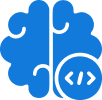Databricks just dropped a wave of updates at Data + AI Summit 2025 —and it’s safe to say, they’re doing more than just adding features. They’re rebuilding the modern data and AI stack from the ground up.
Databricks Summit 2024 now feels like the dress rehearsal for these announcements!
Whether you’re an engineer, analyst, or decision-maker, here are the 10 biggest product announcements that will shape how you work with data this year and beyond.
1- Lakebase
A Postgres-like metadata engine built for the Lakehouse
Lakebase brings transactional consistency, fast queries, and metadata performance to your lakehouse architecture. It’s the glue layer that makes structured access possible across massive data volumes—without sacrificing openness or scale.
2- Agent Bricks
Your enterprise AI agents, now production-grade
Agent Bricks is a new framework that makes it easy to build, evaluate, and deploy AI agents that use your organization’s data via Retrieval-Augmented Generation (RAG). Expect faster time-to-value and lower GenAI experimentation risk.
3- Spark Declarative Pipelines
Define your data logic. Let Spark figure out the rest.
With a new declarative syntax, Spark pipelines become cleaner and easier to manage. Think configuration over code. Now your intent would meet automation seamlessly and the pipeline building process gets simplified.
4- Lakeflow
Managed orchestration for your data workloads
Databricks Lakeflow helps you build, schedule, and monitor complex data workflows without managing infra. Built to scale with your team’s needs, it replaces scattered DAGs with one consistent orchestration layer.
5- Lakeflow Designer
Drag. Drop. Deliver.
A visual canvas for creating ETL pipelines without code. Lakeflow Designer makes pipeline building intuitive for analysts and operators, while still producing production-grade Databricks workflows.
6- Unity Catalog Metrics
Governance meets observability
Unity Catalog now offers live metrics for data quality, usage, freshness, and access lineage. This tightens control and makes compliance and trust easier to prove—no more data blind spots.
7- Lakebridge
Free, AI-powered data migration into Databricks SQL
Move from Snowflake, Redshift, or legacy warehouses without friction. Lakebridge is a no-cost, open-source migration tool that helps you modernize your stack on your terms.
8- Databricks AI/BI (formerly Genie)
BI without the query language
Business users can now ask natural-language questions and get dashboards, metrics, and insights—powered by GenAI and structured on trusted data. It’s self-service analytics, evolved.
9- Databricks Apps
Build internal apps on Databricks—securely and scalably
Now you can create and run interactive applications directly on the Databricks platform with enterprise-grade identity control and data governance baked in, for the benefit of the Databricks community.
10- Databricks Free Edition
Get started with Databricks—forever free
No credit card. No setup cost. The Free Edition is perfect for developers, learners, and small teams to explore the full power of Databricks.
What This Means for Databricks users?
The common thread in all these announcements are
- Better Access.
- Adherence to Simplicity.
- Streamlined Governance.
- Prompt AI-readiness.
Databricks is now no longer just for engineers. With tools like Agent Bricks, Lakeflow Designer, and AI/BI, business teams now can impose their objectives with a front row seat in the data conversation.
Quick recap
Inferenz, an official Databricks partner, is already applying the latest updates to power its agentic AI solutions in healthcare. From real-time patient-caregiver matching to workforce analytics and natural language-based insights, our tools are built to act on fresh, unified data.
Expect faster decisions, earlier risk detection, and zero extra tech layers. As AI in healthcare accelerates, the Databricks ecosystem is setting the pace, and we’re already building caregiver connect solutions with it.
Want to see it in action? Contact us soon.
FAQs on the 2025 Databricks Summit Highlights
- What makes the new Lakehouse engine different from a classic warehouse?
Lakebase brings a transactional layer to the Databricks Lakehouse model, giving you ACID reliability without leaving open-format storage. - How will the new metrics improve governance?
The live metrics inside Unity catalog in Databricks give instant views on data quality, freshness, and usage—crucial for audit and compliance teams. - Where can I monitor pipeline runs built in Lakeflow?
Every run appears in the new Databricks workflow job dashboard, offering status, lineage, and error details in one place. - Is there a no-code entry point for building workflows?
Yes—Lakeflow Designer lets analysts drag and drop tasks, then schedules the flow using the same engine that powers Databricks workspace and its automation. - What’s new for model tracking and deployment?
The summit added tighter hooks between Databricks MLflow and Agent Bricks; you can now call models through a unified Databricks API during agent execution. - Will third-party tools integrate more smoothly?
Yes—expect richer SDK support through Databricks connect and a growing Databricks marketplace of certified partner solutions.













